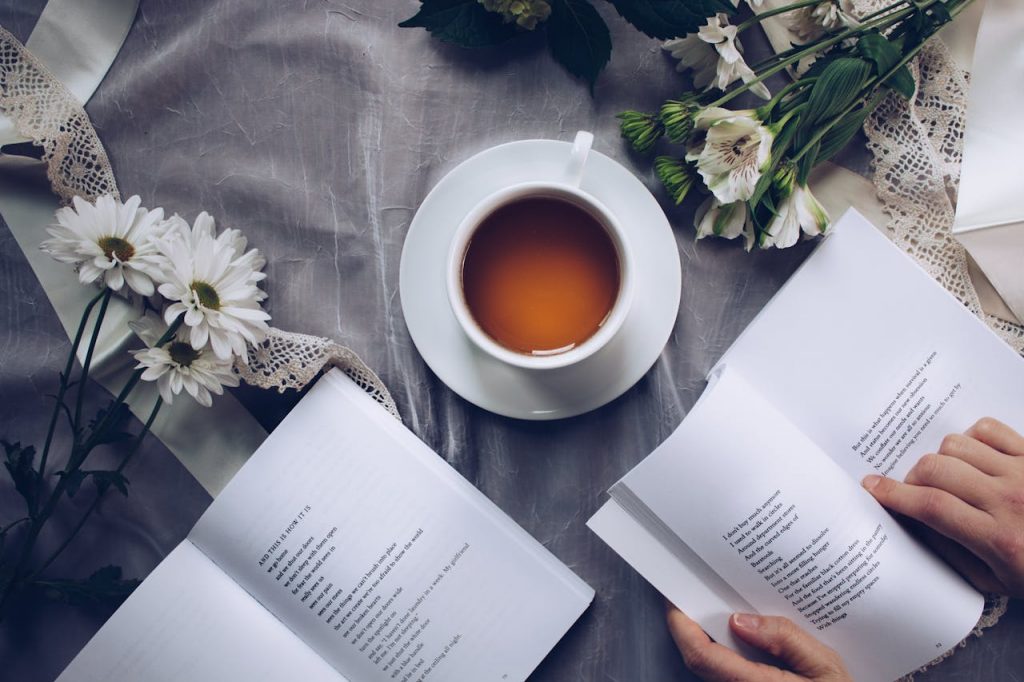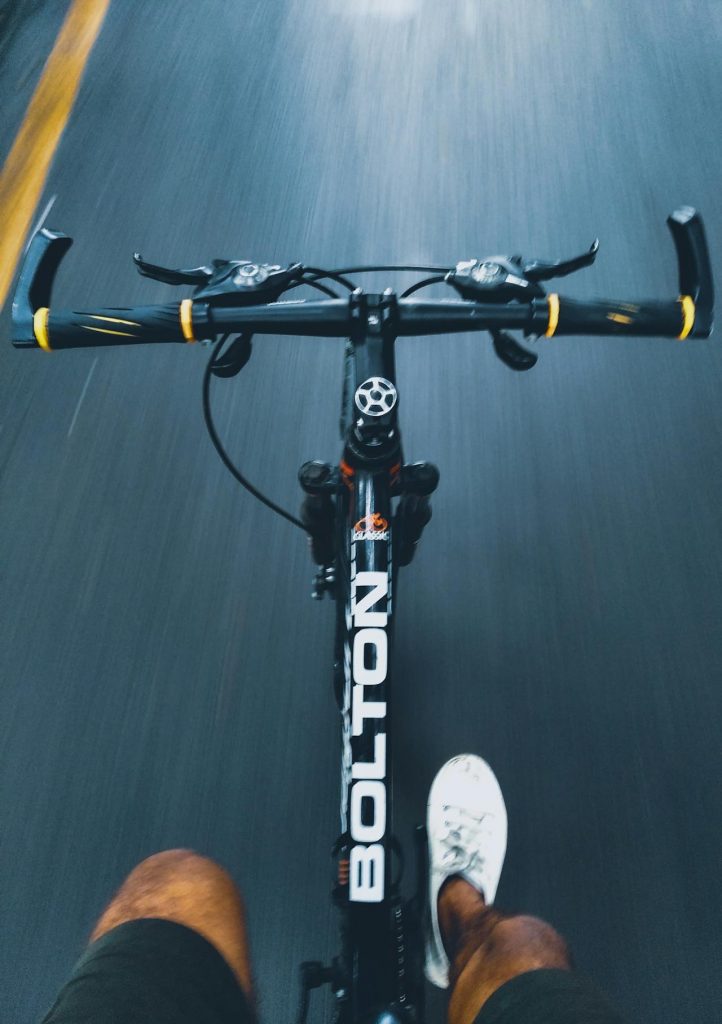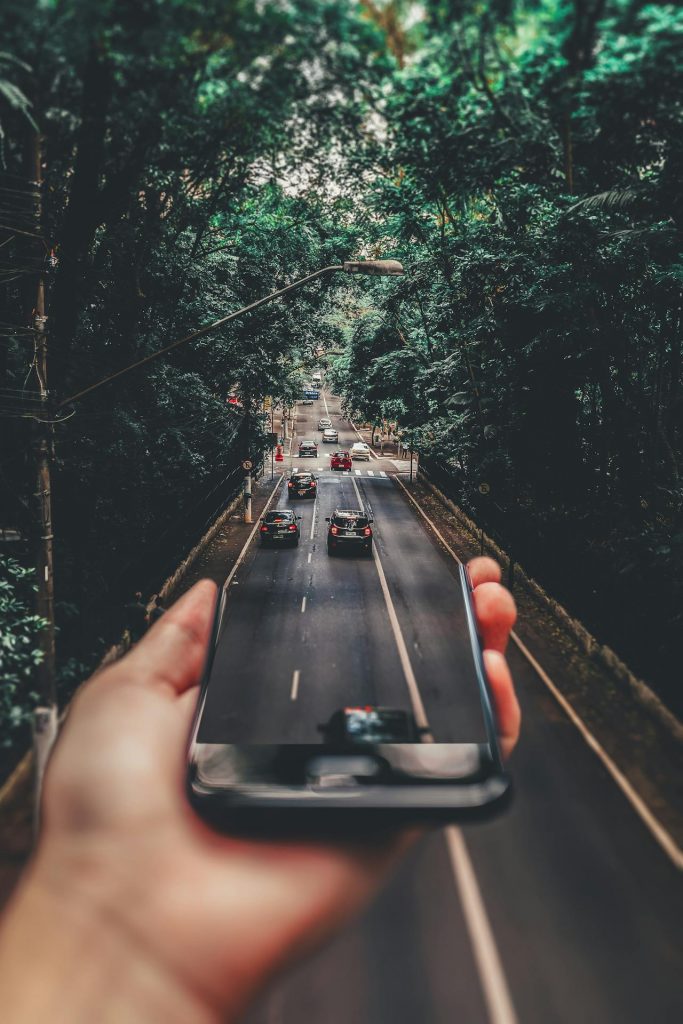We live in a world that celebrates the hustle. Alarms buzz before sunrise, calendars burst at the seams, and relaxation often feels like a luxury reserved for later—much later. But what if joy wasn’t something we had to chase? What if it was already riding shotgun, just waiting for us to notice? In a time when busyness has become a badge of honour, mastering the art of slowing down is not just a rebellion—it’s a revelation. Taarika Dave, Holistic Life Coach and Yoga Expert, at Luke Coutinho Holistic Healing Systems (LCHHS) tell us how to find calm in the chaos, and reclaim joy without hitting pause on life.

In today’s fast-paced world, many people struggle to find time to relax. Why is relaxation so important for overall well-being?
Relaxation is absolutely vital for our well-being, especially because we’re all living in such a fast-paced world. We’re constantly on the go—always trying to accomplish something, reach a goal, or get more done. This keeps our bodies in a perpetual performance mode, where the sympathetic nervous system—our “fight or flight” response—is always activated. That’s driven by stress hormones like cortisol, which are essential for pushing us into action and helping us perform tasks. It’s what gets us moving and achieving.
But here’s the catch: if we’re constantly in that state, with the sympathetic nervous system always switched on, it takes a toll.
Our health, healing, and even longevity depend on how much time we spend in the parasympathetic nervous system—the “rest and digest” mode. This is where the magic happens: healing, repair, rejuvenation, regrowth, and cleansing. All the longevity supplements, tonics, and fancy diets in the world can’t replace this. The real key to a long, healthy life is how often you can drop into that relaxed, restorative state.

Now, I know what people think—relaxation sounds like it requires scheduling huge chunks of time, which feels impossible when life is so busy. But it doesn’t have to be that way. Relaxation can sneak into your day in the smallest, simplest forms. Sometimes, even just one deep, mindful breath can shift so much in your body. That’s why I tell my busy clients and students to weave in as many peaceful breaths as they can throughout the day—whether they’re at work, traveling, or in the middle of a hectic moment. These little “breathing breaks” don’t need an elaborate setup or a yoga mat. They’re a quick, powerful way to tap into that parasympathetic state and let your body reset.
Relaxation isn’t a luxury—it’s a necessity, and it’s more accessible than you might think.
What are the biggest misconceptions about relaxation?
One of the biggest misconceptions about relaxation is that people think it means booking an expensive spa day or jetting off for a holiday. While those can be fantastic ways to unwind, relaxation doesn’t have to be time-consuming, require blocking off a huge chunk of your day, or cost a thing. We can sneak it into our lives in simple ways: a quick breathing break, listening to a favorite song, or just taking a peaceful pause for a few minutes of silence. It’s about redefining relaxation, because we’ve overcomplicated it and made it seem like this big, elusive event.
Another misconception is that relaxation is only for the weekend. Sure, the pace might feel lighter than the week with fewer work responsibilities, but our bodies don’t care about the calendar. They don’t know we’ve got a 9-to-5 or a packed schedule of duties. Relaxation isn’t a luxury reserved for Saturday or Sunday—it’s a daily need, hardwired into us, no matter our status, position, or to-do list. Our bodies crave rest and repair every single day to keep us going.

And then there’s the idea that relaxation is lazy or unproductive. People often feel guilty for slowing down, like they’re slacking off if they’re not constantly on the move. But that’s so off-base—relaxation is a vital reset for your mind and body, boosting your focus and energy for everything else you tackle. It’s not about doing nothing; it’s about doing something intentional for yourself. So, whether it’s a deep breath in the middle of a hectic Tuesday or a quiet moment on a busy morning, that’s relaxation too—no weekend or spa pass required.
How does chronic stress impact the mind and body?
Chronic stress doesn’t just mess with your head—it’s a full-body takeover, hitting you right down to the cellular level. Chronic stress and poorly managed stress can make your hair follicles weaken and fall out, dull your skin, strain your eyes, and dry out your mouth. It hammers your immune system, leaving you more vulnerable to everything from colds to serious illnesses. Your heart and lungs feel the weight too—stress cranks up your cardiovascular system, pushing it into overdrive, while your gut takes a major hit. The gut’s so tied to the nervous system that chronic stress can throw it into chaos, leading to issues like leaky gut, which opens the door to autoimmune conditions—think psoriasis, eczema, lupus, or rheumatoid arthritis.
Then there’s the hormonal fallout. Chronic stress messes with your reproductive organs, disrupts your hormones, and shifts your body composition—whether you’re holding onto more fat or losing muscle. It speeds up aging, fogs up your cognitive health, and chips away at your memory. Every single decision you make in a day hinges on how stress is steering you—your choice to eat better gets hijacked by cravings when you’re frazzled, your motivation to work out tanks with your energy levels, and your thought process loses its clarity. Even sleep takes a hit: how fast you fall asleep, how long you stay in deep sleep cycles—it all depends on your stress and emotional health.

That’s why it’s a major pillar of focus in lifestyle medicine right now—it’s not just in your mind; it’s in your bones, your blood, your breath—everywhere. But here’s the thing: stress doesn’t have to be the bad guy. It’s not inherently negative; we’re all hardwired for it as a survival tool. The trick is knowing how to navigate it—not staying stuck in that tense, wound-up state, but moving through it, taking action to manage it. It’s about working with stress, not letting it run the show.
What does science say about the most effective relaxation techniques?
Science points to some pretty clear winners when it comes to effective relaxation techniques, and breathing exercises top the list. Research shows that even a single deep breath can trigger a cascade of changes in the body. Intentional slow breathing shifts the body from the sympathetic nervous system (that fight-or-flight mode) to the parasympathetic (rest-and-digest mode). This switch lowers heart rate, reduces blood pressure, and dials down stress hormones like cortisol. It even tweaks the body’s pH, making it less acidic as oxygen levels stabilize, which helps calm inflammation—a big player in chronic health issues.
Beyond breathing, science backs progressive muscle relaxation (PMR) technique too, where you tense and release muscle groups one by one. Studies show that it helps to cut anxiety and improve sleep by lowering muscle tension and stress markers.
Mindfulness meditation, another well-researched technique, rewires the brain over time—neuroimaging shows it shrinks the amygdala (the stress center) while boosting activity in the prefrontal cortex (the calm, rational part).

Then there’s the power of nature: research, like studies from Japan on “forest bathing,” finds that just 20 minutes in green spaces slashes cortisol levels and boosts immune function through phytoncides, those natural compounds plants give off.
Even simple stuff like listening to music—especially slow tempos around 60 beats per minute—syncs up your heart rate and breathing, easing you into a relaxed state, according to studies on autonomic nervous system responses.
What are some quick relaxation techniques that can be done in under five minutes?
When you’ve got less than five minutes to unwind, there are some quick relaxation techniques that can fit right into your day.
Firstly, deep breathing—take slow, deliberate breaths, inhaling for four seconds, holding for four, and exhaling for six. It’s fast, and it flips you from stressed to calm by activating that parasympathetic nervous system.
Then there’s listening to a song—pick something mellow, around 60 beats per minute, and let it sync your heart rate to a relaxed rhythm. It takes just a couple of minutes.
Stretching is another great one—stand up, reach for the sky, or twist your torso gently for a minute or two. It releases muscle tension and boosts blood flow, waking up your body in a calm way.

Body scanning’s quick too—start at your head and move to your toes, noticing any tightness and letting it go; you can do it in under three minutes sitting right where you are.
Finally, try the 5 senses exercise: name five things you see, four you can touch, three you hear, two you smell, and one you taste. It grounds you in the moment and takes maybe two minutes tops.
For people who claim they “don’t have time to relax,” what’s one small change they can make?
For people who insist they “don’t have time to relax,” the one small change they can make is a mindset shift. Relaxation isn’t some big, time-sucking commitment—it can happen in five minutes or less, like a quick deep breathing break or a stretch between tasks. If someone can’t carve out even that, it’s not just about a busy schedule; it’s a sign they might need some serious time management skills.
In a city like Dubai, where the lifestyle is fast-paced, how can people balance work, social life, and relaxation?
In a city like Dubai, where the lifestyle is fast-paced, balancing work, social life, and relaxation is totally doable. It is about being smart about it. Work in Dubai does demand long hours and high energy, but one can find pockets of time to sneak in a few moments of calm: five minutes of deep breathing between meetings or a quick desk stretch keeps you grounded without breaking your flow.
Even in Dubai’s hustle, nature’s surprisingly close, especially in the evenings when the heat eases up. Step out at the Marina, and you will see people enjoying their outdoor time, cycling along the waterfront, walking their dog or just sitting by the water. It is so amazing that Dubai has places like these to get outdoor time as well, especially during the cooler months.

The trick is micro-dosing relaxation since Dubai doesn’t slow down. Stuck in a traffic jam? Turn on your soothing playlist.
So there is a possibility. One just needs to be smart about it and find these pockets of recharge and weave them into your routine alongside work and play.
Do different cultures approach relaxation differently?
Different cultures relax in ways that fit their lives and traditions.
Like in many parts of Africa, relaxation is a community affair. They chat, laugh, tell stories, and maybe drum or sing together. It’s not about being alone; it’s about resting as a group. Relaxation in communities and tribes like the Masai feel like a shared celebration.
In Japan, they’ve got “shinrin-yoku,” or forest bathing. People walk slowly through forests, soaking in the quiet and nature. It’s calm and personal, tied to their respect for the natural world, helping them feel peaceful and recharged.

In Spain, the siesta culture rules. After lunch, people take a break—napping or just resting. It’s a daily habit that makes relaxation a normal, no-big-deal part of life.
In Blue Zones—places like Okinawa (Japan), Sardinia (Italy), and Ikaria (Greece) where people live super long, healthy lives keep relaxation simple and built-in.
In Okinawa, folks take time to sip tea and chat with friends, keeping stress low. In Sardinia, shepherds rest with their flocks in the hills, surrounded by nature, and evenings are for family meals and laughs. Ikarians nap in the afternoon (like a mini-siesta) and move at a slow pace—no rush, just enjoying the day. Blue Zones teach us to weave relaxation into daily life—through nature, connection, or just pausing—without overthinking it.
Each culture proves relaxation can look different—loud or quiet, solo or together—but the trick is making it part of your day, not a chore or a weekend activity!
How does technology impact our ability to truly unwind?
Technology’s a double-edged sword when it comes to unwinding—it can help or hurt, depending on how we use it.
A lot of people think scrolling through social media is relaxation, but it’s not. Your brain’s still on, constantly processing a flood of info—likes, comments, endless posts and churning out more and more dopamine. It’s not a break; it’s a workout. Worse, many do this right before bed, and the blue light from screens messes with melatonin, throwing off sleep. That leads to tossing and turning instead of deep rest. Studies show even 30 minutes of screen time before sleep can delay how fast you nod off and cut into those precious deep sleep cycles.
Then there’s the human side. Instead of chilling with family, laughing, or making real memories, people get glued to their phones—checking feeds, watching reels, stuck in a virtual loop. It pulls us away from real connection, the kind that actually soothes the soul.

Watching a reel or two might feel like a breather, but it’s not true relaxation—it’s just distraction keeping your mind buzzing. Data backs this up: excessive screen time’s linked to higher stress and lower well-being, especially when it replaces face-to-face moments.
But it’s not all bad. Technology can aid relaxation if you’re mindful. Watching a movie with family? That’s tech working for you. The trick is control: set boundaries and be intentional about it.
What are some practical ways to incorporate mindfulness into daily routines?
Mindfulness doesn’t need to be a big, separate thing—it’s about being fully present in whatever you’re doing. Take sipping a cup of coffee: instead of gulping it down while scrolling or rushing, slow it way down. Feel the warmth of the mug, smell the aroma, taste each sip—no multitasking, just you and the coffee. Or if you’re walking, don’t just march—notice your surroundings: the trees, the sounds, the air.
Even a shower can turn mindful. Focus on the water hitting your skin, the sound of it, the steam—don’t let your mind race ahead to your to-do list.
Listening to music? Tune into every beat, every rhythm, the story in the lyrics, instead of letting it fade into background noise. If you’re knitting, zero in on the click of the needles, the feel of the yarn—no distractions, just that.
Even work can get the mindful treatment: ditch the multitasking, dive deep into one task, and watch how much faster and better it gets done. Studies show this kind of focus cuts stress and boosts productivity—less time, more satisfaction.
Mindfulness isn’t about adding something extra; it’s about doing what you already do with 100% presence. Whether it’s coffee, a walk, a shower, or your job, slow down, tune in, and let the moment be enough.
How can professionals in high-pressure jobs incorporate relaxation into their schedules?
Professionals in high-pressure jobs can sneak relaxation into their packed schedules with small, smart moves that don’t demand a big time overhaul. One small win is taking breathing breaks—step aside for two minutes between tasks, inhale deeply for four seconds, hold for four, exhale for six. It’s quick, calms the nervous system, and resets your focus.
Another trick: listen to a song or two between meetings. It’s a mini mental escape that doesn’t derail your day.

Stretching breaks work wonders too—stand up, reach high, or twist your back for a couple of minutes. It loosens tension from sitting and boosts blood flow, keeping you sharp.
Time management’s key here: block off even 15 minutes, or 10 minutes or even 5 minutes in a day to step away—no emails, no calls, just you. Then, over the weekend, prioritize decompressing—hang with family, laugh, make memories.
Studies show this kind of social downtime slashes stress hormones and recharges you for the grind ahead. High-pressure doesn’t mean no breaks; it means getting smart about fitting them in—little bursts during the day, bigger ones when the week winds down. That’s how you keep the engine running without burning out.
What role does setting boundaries play in achieving relaxation?
Setting boundaries is important for achieving relaxation. Every time you say “yes” to something extra, you’re quietly saying “no” to yourself, to your own peace. If you don’t set boundaries, someone else will—whether it’s a boss, a friend, or even your own guilt.
Lots of people genuinely want to relax, but they can’t because they’ve left themselves wide open, always available, taking on too much. They overcommit, spread themselves thin, and end up working late nights, over weekends, even during vacations. Sure, in some cases—like emergencies or roles like patient care—it’s unavoidable. But without boundaries, even the best intentions to unwind get trampled.
Think about it: if you don’t state clearly—no work emails after 8 p.m., no calls on Saturday—you’re stuck in “on” mode. Your brain can’t clock out, stress hormones keep churning, and relaxation slips away. Setting boundaries means claiming your time: maybe it’s telling colleagues you’re offline after hours or shutting the laptop during family dinner. It’s not just saying “no” to others; it’s saying “yes” to yourself—to a breather, a stretch, a moment to just be.
Boundaries aren’t a luxury; they’re the foundation that lets relaxation actually happen, keeping you from drowning in everyone else’s demands.
Are there any emerging trends or technologies that are shaping how people relax?
Yes, technology and AI are definitely shaking up how people relax. Meditation apps are everywhere now, guiding people through breathing exercises, affirmations, or visualizations with just a tap—making mindfulness super accessible. Journaling’s gone digital too; apps let you jot down thoughts or gratitude lists on your phone. Sure, nothing beats the feel of pen on paper, but it’s a handy option for busy lives. Fitness apps and wearables are tracking your physical strain and even nudging you to take it easy when your body’s had enough. They give you data on sleep, stress, and recovery, turning relaxation into something you can measure.

Sound tech’s trending as well, with things like binaural beats or white noise apps designed to sync your brainwaves to a calmer state.
But here’s the catch: while these tools are awesome, they shouldn’t override your gut instinct and intuition. Technology can back up your need to rest with data, but it’s no replacement for tuning into your body’s signals.
With over a decade of experience in her practice, Taarika’s expertise is biotechnology, yoga, naturopathy, and life coaching. Specializing in life coaching, she excels in areas such as building new belief systems, enhancing self-esteem, and more. She is known for her empathetic and caring attitude, strong listening skills, and solution-oriented mindset.
Taarika is a master graduate in Master of Technology (MTech.) in Biotechnology, Teacher Training Course in Yoga & Naturopathy and ICF Certified Holistic Life Coach Certification Program.
